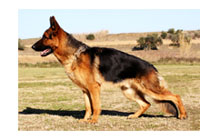Right keywords for images
0
Usually, selecting keywords for an image is the concluding step in the process of uploading an image to stock photo sites. Unfortunately, many microstock contributors push keywording to the back burner.
Choosing keywords for microstocks
But the point is that choosing the right keywords is not just as important as framing the perfect shot or creating a beautiful illustration, it is even more important: today, keyword choice is the most critical aspect on the path to the ultimate goal – making money.
Although the Shutterstock team has repeatedly emphasized this in their newsletters, it is worth reminding once again that the importance of proper keyword selection should not be underestimated, which is why we revisit the keywording issue every few months.
The goal of today’s article is to refresh information about the importance of keywords as a very powerful tool in the arsenal for selling images that required so much hard work to create.
It is deserved to earn money from selling images, and proper keywording is the key (pardon the tautology, but it is very close) that enables earning that money.
So, please remember:
Do not keyword spam
Keywords are checked and re‑checked very often, sometimes simply to ensure buyers can find the right image without sifting through piles of irrelevant results.
It is clear there is a desire to reach the widest possible audience, but using irrelevant or even loosely related words is still spam. A photo of a bee must not be described with the word “fly,” for example.
 The same applies to locations. If there is a photo of Toronto skyscrapers, there is no need to add “Pittsburgh” to the keyword list. Titles and descriptions should be handled carefully as well.
The same applies to locations. If there is a photo of Toronto skyscrapers, there is no need to add “Pittsburgh” to the keyword list. Titles and descriptions should be handled carefully as well.
For example, if the photo title is “Toronto skyscraper,” but the keyword list includes Pittsburgh, New York, etc. This is not acceptable.
If that is done, the following will occur:
- You will be reviewed;
- You will receive a warning.
And the following may also happen:
- Your images will be removed;
- Your account will be closed.
Garbage in keywords, like incorrect use of the description field, harms not only sales but also the sales of colleagues. How does that happen?
A buyer disappointed once, who searches for “Toronto skyscrapers” and encounters false (inaccurate) results, may leave for another resource for good in search of the needed image.
Therefore, please do not litter keywords. Given the growing popularity of editorial images, this is especially important. Clients want accuracy, which brings us to the next point.
Describe the image accurately
 For example, there is a photo of a German Shepherd puppy. The words: dog, canine, and puppy fit this image.
For example, there is a photo of a German Shepherd puppy. The words: dog, canine, and puppy fit this image.
Even better are “German Shepherd” (as a phrase) and “Alsatian” (regional name).
But do not write: poodle, wolf, cat.
See the difference?
Put yourself in the buyer’s shoes
Imagine being a buyer looking for a specific image. Draft a long list of keywords that could fit the image. Now edit it.
Go through the entire list, removing keywords that fall outside of relevance.

Simplicity – is key.
While many stock subscribers may use conceptual keywords such as: nightmare, freedom, and economy, ensure that any conceptual terms added are not random.
If there is a photo of a man with his mouth wide open, then both words – “yawn” and “scream” – fit. But not the word “loud.”
The right choice of keywords will help generate more sales. Give this process no less attention than the creation of images.
A mail carrier who can collect the mail but cannot deliver it will not last long.
Plan keywording as carefully as image creation, and it will be possible to significantly increase sales volumes.
link to the original article: buzz.shutterstock.com/keywording/good-keywords-sell-the-importance-of-keywording-properly
This article is available in the following categories: About Microstocks, 123RF, Depositphotos, Dreamstime, Fotolia, Istockphoto, Shutterstock


